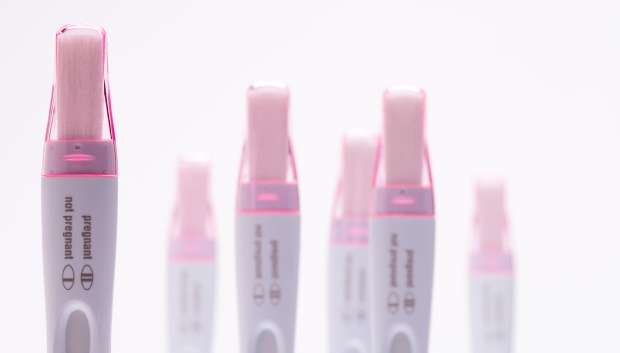
Dec 17, 2015
Blog Life Sciences Checking in on In Vitro Diagnostics
In vitro diagnostics (IVD) is one of the most important areas in the global healthcare industry -- and the highest revenue segment of the multibillion dollar medical devices market.
IVD includes analyzers, reagents, disposable and reusable products, and accessory software products used by both clinical and research laboratories around the world. These tools range from simple self-use tests to state-of-the-art genomic tests performed in laboratories, and can be used in the diagnosis of infectious and chronic diseases, as well as for preventive care and drug therapy monitoring.
IVDs are critical to the general public as they serve not only as indispensable tools of medical diagnoses but also as decision-making aids for disease prevention and timely treatment to enhance well-being and keep healthcare costs under check.
According to BCC Research's In Vitro Diagnostics: Technologies and Global Markets (HLC186A), the global market for IVD products was valued at $57.3 billion in 2014 and is expected to grow from $60.3 billion in 2015 to $81.1 billion by 2020 at a steady compound annual growth rate (CAGR) of 6.1% from 2015 to 2020.
"Rapid technological developments should drive the growth of the IVD market over the next five years," said BCC Research Healthcare analyst Sangeetha Prabakar. "An emerging segment of IVDs, companion diagnostics, as well as next-generation sequencing techniques are expected to contribute to the market growth of IVDs through the decade."
FACTORS SHAPING GROWTH IN THE IVD MARKET
1) Need for Disease Detection before Appearance of Symptoms: Rapid advances in human genome sequencing with the aid of next-generation sequencing techniques and molecular testing methods are now enabling the identification of faulty genes (for example, genetic mutations in BRCA1 and BRCA2 genes indicate an individual’s risk for breast or ovarian cancers). Hence, the possibility of diagnosing a disease before its symptoms appear are becoming much better than previous years.
2) Need to Identify the Right Patients for Drug Therapy: Critical data such as a patient’s rate of drug metabolism, drug efficacy, and adverse side effects, if any, enable healthcare experts to identify the right patient for a particular drug. Likewise, having an advanced knowledge of the optimal dosing frequency will aid in achieving the desired therapeutic effect in an individual patient.
3) Need for Faster Real-Time Tests that Enable Personalized Treatment: Faster tests such as HbA1c tests for diabetes monitoring, tests that monitor HIV drug resistance, cholesterol and other lipid profile tests for monitoring efficacy of lipid-control drugs provide real-time results, and are indispensable tools of personalized medical care for many chronic diseases, such as heart disease, arthritis, kidney dysfunction and certain viral infections.
4) Point-of-Care Tests that Minimize Dependency on Lab Testing: Point-of-care tests provide critical information at the point of healthcare delivery, thus enabling timely diagnoses and treatment commencement by the medical care personnel, which in turn results in improved patient compliance with physicians' recommendations. These tests can be performed anywhere—at the patient’s bedside, in an emergency room or clinic, at a physician’s office or even at home.
5) Improving Healthcare Budgets Drive Demand for IVD in Emerging Markets: By 2020, the healthcare expenditure in Asia is expected to increase by more than 100%, and that growth will be led by China and India.
6) Rising Aging Population and Global Incidence of Chronic Diseases: There is a global increase in aging population, often accompanied by a rise in the incidence of chronic diseases such as cardiac disease, cancer and diabetes in older adults in particular. As a result, the healthcare systems worldwide are under tremendous pressure to increase healthcare budgets for handling a growing sick population by investing in high-quality IVD testing, the demand for which has become much higher than before.
7) Discovery of New Biomarkers and Advances in Molecular Techniques: The potential for a faster development of new and innovative molecular diagnostic tests highly depends on timely discovery and clinical validation of new genetic and protein biomarkers associated with disease pathways, and infectious disease and recovery states.
8) Public and Environmental Health Monitoring Requires the Use of IVDs for Faster Diagnosis and Treatment: IVD tests not only find individual uses but are also primary aids for public health monitoring purposes such as newborn disease screening in population types, rapid identification of pathogens during epidemic outbreaks, identification of microbes that develop drug resistance over time and for determining risk of bio threats.
In today’s fast-paced biomedical world, researchers and pharmaceutical companies...

Radiopharmaceuticals represent a cutting-edge frontier in modern medicine, offer...

Implantable Remote Patient Monitoring (IRPM) devices are revolutionizing healthc...

We are your trusted research partner, providing actionable insights and custom consulting across life sciences, advanced materials, and technology. Allow BCC Research to nurture your smartest business decisions today, tomorrow, and beyond.
Contact UsBCC Research provides objective, unbiased measurement and assessment of market opportunities with detailed market research reports. Our experienced industry analysts assess growth opportunities, market sizing, technologies, applications, supply chains and companies with the singular goal of helping you make informed business decisions, free of noise and hype.